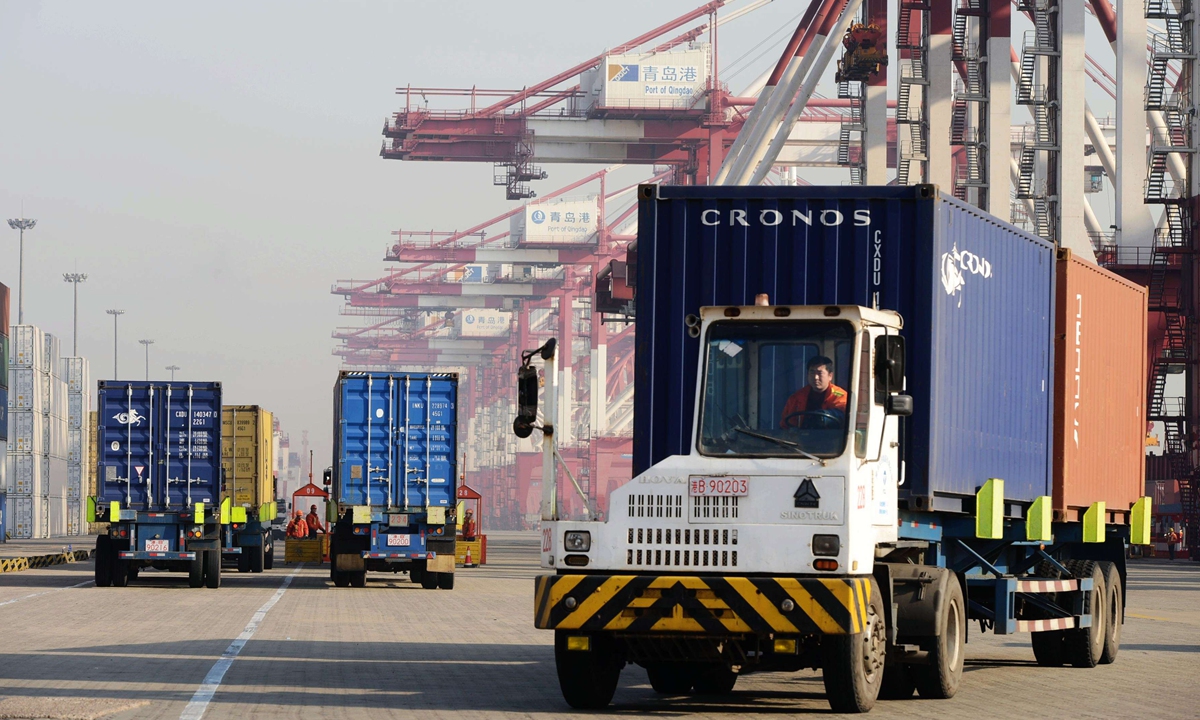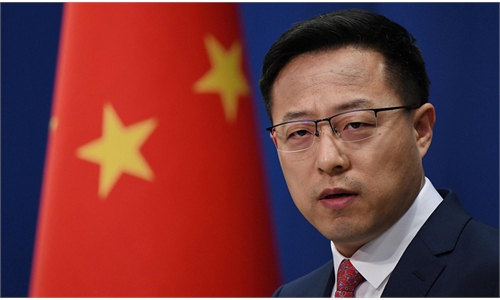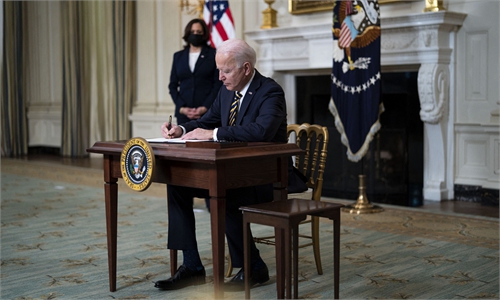
Trucks moving containers around at the Port of Qingdao in East China's Shandong Province File photo: VCG
With US ports facing a serious container backlog that has disrupted China-US commerce move under the impact of the pandemic, China's leading shipping company has moved swiftly to send more than 400 empty containers to the US to ease the congestion.
A China COSCO Shipping Corp vessel carrying 487 special-size 53-foot containers arrived at the Port of Los Angeles on February 8, helping ease the container shortage in the US. It was the first time that such a large volume of empty containers was transported to the US at once, the Global Times learned from a source close to the matter on Thursday.
US port congestion that has persisted since last year has aggravated the container shortage, and some US traders have come to China for solutions in an urgent manner.
Nearly 300,000 20-foot equivalent unit containers were waiting to be unloaded from ships at US ports in January alone, and the situation remained severe in February, with containers piling up at several ports on the US West Coast, media reports said.
"A decline in operations at some ports on the US West Coast has led to the cutting of up to 50 percent of workers amid the uncontained outbreak," Wu Minghua, a Shanghai-based independent shipping industry analyst, told the Global Times on Thursday, and the congestion has disrupted normal trade flows.
While it usually takes 24 hours to unload a containership at a US port, it now takes three to five days or even more, a situation that has disrupted the supply chain and trade, Wu said.
In order to meet demand for containers, producers in China have been running at full capacity and many worked during the Spring Festival.
The container shortage has been severe since late last year, Daniel Zhang, a market manager with Singamas, a large container maker, told the Global Times. However, due to rising raw material costs such as those for steel, it's impossible to further expand production capacity at short notice, said Zhang.
When the US port congestion caused container shortages and trade disruptions, some US media, instead of looking to their own faults, blamed China's strict epidemic measures for causing backlogs at some ports in China and global container shortages.
In stark contrast with these Western reports, Chinese ports such as those in Ningbo, East China's Zhejiang Province and Dalian in Northeast China's Liaoning Province are working at 98 percent capacity under virus prevention conditions, playing a significant role in easing logistic hurdles.
As the US vaccination rate is rising, experts expect US ports would resume full operations, but it will take another three months to digest the backlogs, industry insiders said.



